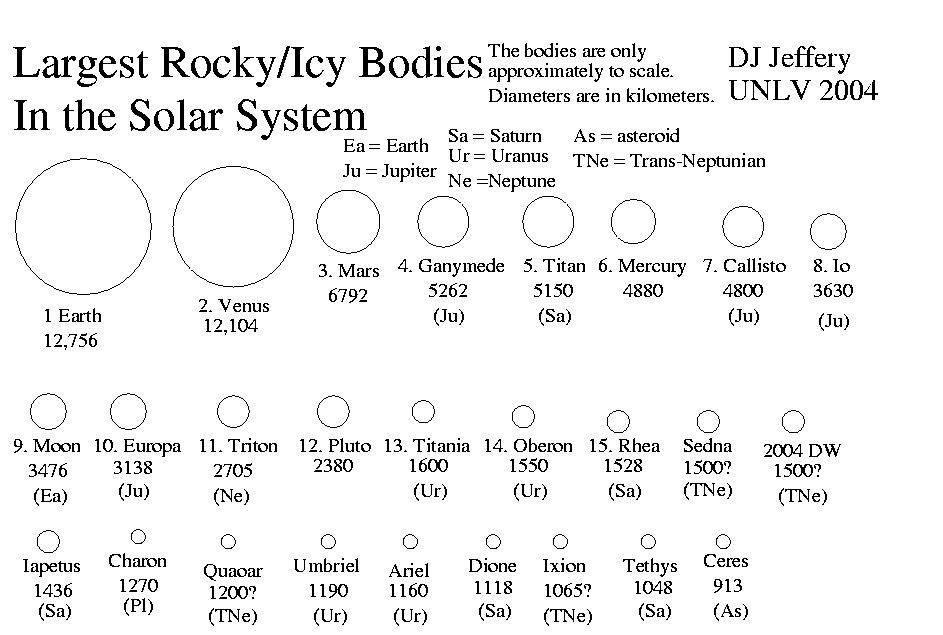
Caption: The largest rocky bodies (including the rocky planets) naturally) and rocky-icy bodies in Solar System ranked in order of decreasing diameter.
The rocky-icy bodies do NOT include the Sun and the gas giant planets (i.e., Jupiter ♃, Saturn ♄, Uranus ⛢ or ♅, and Neptune ♆).
Features:
- The diagram
is a bit out of date since it predated the
discovery of some of the large
trans-Neptunian objects (TNOs)
(which include large
Kuiper belt objects (KBOs)).
So some new large rocky-icy bodies
need to be inserted among the smaller
displayed rocky-icy bodies.
Circa 2022, there are ∼ 3900 known TNOs (see Wikipedia: List of trans-Neptunian objects). The count is growing rapidly with automated searches.
- Currently, the most massive
known
TNO
is Eris
which has
a diameter of ∼ 2300 km.
It is definitely more massive than
Pluto,
but its diameter is about the same.
Thus,
Eris and
Pluto are nearly tied in ranking by
diameter.
- The Moon's
diameter is ∼ 3500 km, and
so no known
TNO yet
changes its place in the ordering at number 9.
But the day may come when we find a larger
TNO
and push the Moon further down the list.
- The Galilean moons
of Jupiter rank high as one can see.
- Selected rocky bodies
and
rocky-icy bodies
from the diagram with their
astronomical symbol if they have one:
-
Earth ⊕,
Venus ♀,
Mars ♂,
Ganymede,
Titan,
Mercury ☿,
Callisto,
Io,
Moon ☽,
Europa,
Triton,
Pluto ♇,
Charon 🝑,
Ceres
.
- For an up-to-date ranking by diameter of all Solar System astro-bodies, see Wikipedia: List of Solar System objects by size.
Credit/Permission: ©
David Jeffery,
2004 / Own work.
Image link: Itself.
Local file: local link: rocky_icy_body.html.
File: Solar System file:
rocky_icy_body.html.